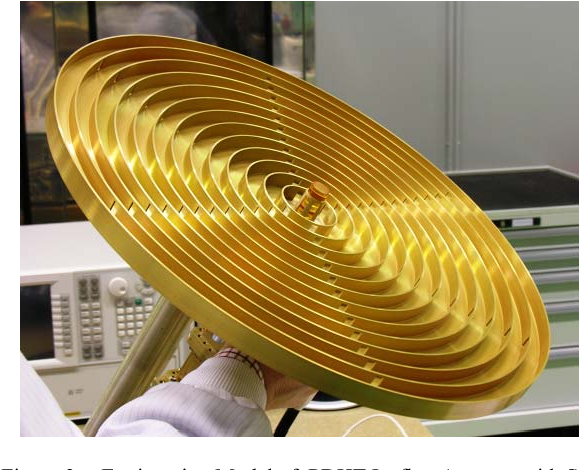After reading @ Saiboogu's answer explaining what this is, I found some additional helpful information.
This is an isoflux antenna, designed to provide an approximately constant flux of broadcast signal over the useful transmission footprint on the Earth, from the nadir out to a maximum cone angle of 60 degrees from the nadir as seen by the spacecraft. While an "omnidirectional" antenna would be the simplest solution, it wastes a lot of power in directions that won't ever reach the Earth.
Instead, his antenna has been carefully designed and optimized to distribute the power only in directions that reach the Earth at places where the spacecraft will be usefully visible above the horizon.
Using the Law of sines one can show that Sentinel's altitude of about 800 km, the limb of the Earth is a bit farther than 60 degrees away from the nadir, and at 60 degrees the elevation angle of the spacertaft is about 13 degrees above the horizon, which is about 3,000 km away from the sub-satellite point along the Earth's surface. Power transmitted beyond 60 degrees is wasted.
I borrowed the diagram from this answer. If drawn to scale the spacecraft would be much closer to the Earth.
$$\frac{\sin(OPA)}{R_E} = \frac{\sin(OAP)}{R_E+h} $$

At that point, the path is about 3.6 times longer, and so due to the inverse square law the received power will be ten times lower (-10 dB) than at the sub-satellite point. So what you'd really like is an antenna with a angular dependent gain which was 10 dB higher at 60 degrees than the minimum, and dropped quickly to zero beyond that.

And that's exactly what this weird-looking antenna tries to do!
After optimization to get out the high angular frequency wiggles, there's a small rise near zero, but since this is a small fraction of the solid angle, this does not result in a significant loss of power at large angles.

Sources:
- Semantic Scholar: Multi-objective optimization of an isoflux antenna for LEO satellite down-handling link (open access)
- IEEE Proceedings: Multi-objective optimization of an isoflux antenna for LEO satellite down-handling link (paywalled)
- EnginSoft: Multi-Objective Optimization of XBA Sentinel Antenna Images from here. Click Articolo completo to view the full article.









